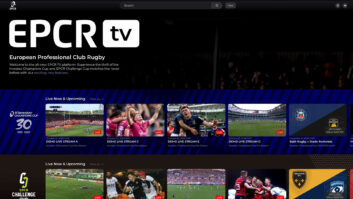Advertising innovation is coming to a TV near you. The latest advertising format to hit the big screen is the “pause ad” – an ad that airs when someone has paused what they are watching. In the UK, pause ads have been on Channel 4 for years. In the US, Netflix has recently rolled out the new format while Peacock calls pause ads “high-impact and unobtrusive” on their website.

With any innovative format, the structure that media companies build around it is at least as important as the ad product itself. Without good processes and technology to manage new ads, it will be hard to sell or scale. There are many things that go into making a new ad product successful. Media companies need to enable sellers to easily price and package the ad format into a larger proposal. They need to easily traffic creative and manage the campaign. And, they need to report on the ad in a way that helps advertisers compare its performance against other ads in their media plan.
Incorporating pause ads into the media mix
Selling advertising is not like selling shoes. Typically, if someone wants to buy shoes, they look for a pair that they like and they buy it. One product, one transaction. Advertising transactions are far more complex. An advertiser working with a streaming company like Channel 4 or Hulu is likely spending money on millions or even billions of ad impressions, targeting specific audiences and content across a number of different ad formats. Pricing needs to be negotiated, creatives need to be built, and campaigns need to be optimised continuously across these various ad formats.
Pause ads are one of a number of innovative ad types on streaming. Viewers are also seeing clickable commerce-driven ads, “pinch back” ads that show content in a smaller window, and even virtual product placement, ads embedded into content using AI. It’s safe to assume that as media companies and advertisers expand their streaming focus, new ads will emerge.
To succeed, media companies need processes and technology in place that can expand to ingest a new format like pause ads. This means that they need an order management system that has a unified product catalogue to help sales to create larger proposals that include these ads. It also means they need revenue management that can help the ad operations team to traffic and manage the ad alongside the rest of the media buy.
Understanding the value of pause ads
While pause ads give advertisers a fantastic canvas for their creative, time will tell how effective the ads are at scale. Today, advertisers are mostly still testing the ad format. One aspect that needs to be analysed is ad recall. If someone is pausing their TV, presumably, they are shifting their attention elsewhere. Perhaps they’re grabbing a snack in the kitchen or responding to a text on their phone, which means they aren’t going to be a captive audience for the pause ad. However, they will likely see the ad when they turn their attention back to the screen.
Having unified insights about pause ads compared to the rest of other advertising in a media buy can help advertisers learn quickly to determine how to best incorporate new formats like pause ads into their broader strategy.
What’s more, media companies need to have an overview of their own performance when it comes to new formats. Understanding the pricing and demand for any new ad type is critical to create a product catalogue that is not just enticing for advertisers, but also profitable to the publisher.
Ultimately, pause ads are one of many new ad types that media companies are introducing in order to maximise their revenue from streaming. Streaming delivers more flexibility, targeting and richer insights than broadcast, so it should be easier for streaming companies to quickly learn what works and what doesn’t.
However, with all of these benefits comes more complexity, and so streaming companies also need to ensure that their operations and technology supports an expanded product catalogue and more sophisticated products overall.







